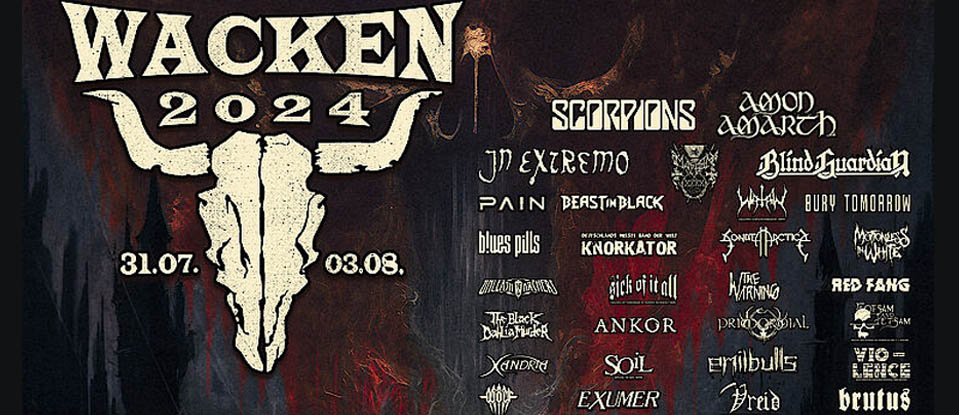A review of Motorfinger’s Black Mirror
By Amanda Beadman
If we accept a linear interpretation of the way the loudest, heaviest music came to be – first there was rock, then hard rock, then heavy metal – then all the variants of metal splintered off, each vying for a new place in the evolution of powerful, intense musical genres.
If bands didn’t diversify their style and move away from metal as they evolved, they necessarily became heavier, darker, scarier, louder, angrier – or they just became Nickelback.
But some bands find what they like, work out how to do it well, and then they stick to it.
This is the case with Norwegian hard rock outfit Motorfinger.
You won’t find anything new here, but that won’t necessarily bother any listener who fondly remembers the era of Soundgarden, Alice in Chains or Tool. Nor will it bother anyone who can trace their musical fandom bloodlines back to the hallowed grounds of Judas Priest, Black Sabbath or KISS.
Listening to Motorfinger will simply be a gritty and familiar homecoming.
In Dust Over Stone the welcome mat is spread out over a wall of drums and a persistent bass that has enough stop/start moments to create a sporadically jagged groove,
The changes in speed, momentum and intensity pull us in and then spit us out against the backdrop of warrior-man vocals and snaking guitar riffs.
There is a seamlessness about the way it is all put together – a consistency of volume and an orderliness that suggests care and attention, an understanding of the need for balance. No one player is dominant, yet each has a chance to shine without overwhelming the whole. It’s a fragile balance that not many bands manage to achieve, and it hints at a line-up where egos are equally weighted and equally gifted.
So many bands are dominated by a flamboyant frontman – but in Motorfinger we find all five throttles set at maximum power for each of the five musicians.
It makes for a listening experience without distraction or confusion, but it also creates a hunger and a curiosity to hear more from each of the band’s separate parts.
As Dust Over Stone progresses there are moments when vocals and music seem intrinsically wedded through melody, and the guitar riffs experience liberation to reach new heights, before descending and giving way to a patina of military march drum beats.
From the drum beats a crescendo rises and again brings us lower to a beckoning creep – building anticipation before leading back to the familiar territory of the chorus.
If post-grunge hard rock had a physiology, this pattern of composition would be hard-wired into its DNA.
The lyrics also neatly fit with expectations, but could be better developed or more original. Despite this, the chorus line and title of Dust over Stone is a beautiful, if not over-thought, image of transience. It evokes something temporal that is hard to grasp or fleeting. Original or not, there is poetry in that.
A high point of this song, and many of the others on this release, is the guitar riff in the song’s second half – where the musicianship of the player is given free rein. This is unmistakably a guitarist who loves to play. The main lead guitar sequence in Dust Over Stone takes a journey at the whim of the axeman as he follows his own joyously dark reveries and takes us along for the ride.
A thumping baseline grounds the meandering exploratory quest of the guitar, while the drums keep a driving, forward-angled momentum that acts as a hammering compass for the melody.
There are moments outside of this sequence where a sidewinder guitar style intrudes on the periphery like a diabolical rumination, before retreating back, just as surreptitiously.
Throughout other songs on the album we find moments that are power-ballad lite, with slower, lilting vocals and a pared back bass. There are also darker moments paired with guitar playing that is slightly transcendent and otherworldly in places – coming to us as an intuitively woven soliloquy before hammering itself back down with a friction-hewn manic reverberation on the tail of an anchoring bass.
The vocals occasionally stray from their established solid hard rock parameters to become intermittently angry, ominous, demonic or menacing.
On Bastards and Saints, one of the albums more high energy offerings, the vocals take on a grittier dimension. You may even hear a growl as the plucky bass string sets up a rhythm of its own in the background. As the bass forges ahead, then pulls back, then forges ahead again, we can hear the strings vibrating through the throbbing drums and a searing guitar. There are elements of Primus in this frenetic interlude, but the brevity of the detour saves it from descending into whimsy or irreverence.
This is further evidence of the clever craftsmanship and precise timing of the band – their measured amounts of stylistic change and diversion pique the listener’s curiosity as to what they might do next.
What makes this music enjoyable is its ability to surprise us, while still existing within the structural parameters of a genre.
It’s a rare balance of familiarity and invention – built on glimpses of depth and suggestions of something more beyond what the music actually delivers. There is a feeling this is a band comprised of individual talents – each bringing something real and vital to the overall creation.
Motorfinger do what they do well, but there is a sense that they have yet to crystallise into something where each of their facets can shine as brightly as it needs to. Some people may feel that they need to push a little harder, or delve a little deeper – or experiment a little more broadly. I found myself wondering if a few crates of energy drinks combined with some major personal turmoil might be all it would take to push them into the realms of something more majestically metal or ferociously hardcore.
I also found myself wondering what would happen if the restrained potentiality and pre-defined limitations were lifted. What would we find in the corner where that dark serpentine riff lives, or in the chamber that houses that ominous shape-shifting growl, or in that street of a musical mind where bass thunders up into a groove laden pulse and demands a response? If each of these things were separately released simultaneously from their homes or cages to shine, where would that raw power and musicality take us?
It’s an idea as hard to grasp as dust over stone…








